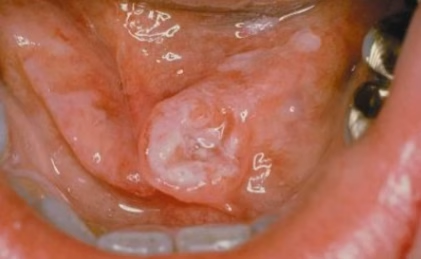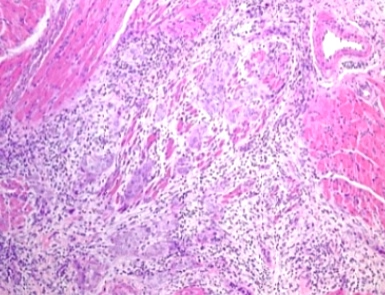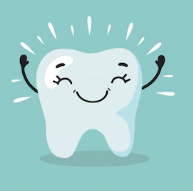Oral cancer is a serious condition that affects the tissues inside the mouth, including the tongue, gums, cheeks, lips, and floor of the mouth. The most common type is oral squamous cell carcinoma, which makes up about 94% of all oral cancers.
Although oral cancer can be life-threatening, it is highly treatable when found early. Regular dental visits, self-checks, and knowing the warning signs are essential for early detection.
What Is Oral Cancer?

Oral cancer happens when the cells of the mouth begin to grow uncontrollably. These cancer cells can:
- Invade deeper tissues such as muscle, bone, or salivary glands
- Spread to lymph nodes in the neck
- Spread to distant organs like the lungs
The impact can be significant because the mouth is important for eating, speaking, swallowing, smiling, and facial expression.
Who Is Most at Risk?
Certain habits, health conditions, and lifestyle factors increase the chances of developing oral cancer. These include:
Age and Sex:
- Most common in people over age 40
- More common in men than women
Tobacco Use:
- Cigarettes, cigars, pipes
- Chewing tobacco, snuff
- Higher risk with longer use (“pack-years”)
- Risk slowly decreases after quitting, but takes about 10 years to return to normal
Alcohol:
- Heavy drinking greatly increases risk
- Alcohol + tobacco together increase risk even more
Betel Quid:
- Chewed in some cultures, with or without tobacco
- Strongly linked to oral cancer
HPV Infection:
- HPV is linked to cancers of the oropharynx (tonsils and base of tongue)
- It is not a major cause of oral cavity cancer
Chronic Health Conditions:
- Severe iron-deficiency anemia (Plummer-Vinson Syndrome)
- Causes changes in the mouth that increase cancer risk
It is important to remember: anyone can develop oral cancer, even without risk factors.
Where Does Oral Cancer Occur?
Most common locations, from most to least frequent:
- Side and underside of the tongue
- Floor of the mouth
- Gums and tooth-bearing area
- Inside of the cheeks
- Hard palate
- Lip (usually from sun exposure)
What Does Oral Cancer Look Like?
Early oral cancers can be subtle and painless. Common appearances include:
- A firm, non-healing ulcer with raised edges
- A red patch (erythroplakia)
- A white or red-white patch (leukoplakia or erythroleukoplakia)
- A lump or wart-like growth
- A mass that resembles an inflamed gum lesion or scar tissue
- A crater-like ulcer in advanced stages
Signs that cancer is spreading in the area may include:
- Destruction of jawbone
- Loose teeth not caused by gum disease
- Difficulty moving the tongue
- Pain or numbness
- Swelling under the jaw or in the neck (enlarged lymph nodes)
Distant spread (to lungs or liver) is less common.
Symptoms Patients May Notice
- A sore that does not heal
- A lump or swelling inside the mouth
- Difficulty swallowing
- Pain or burning in the mouth
- Loose teeth
- Ill-fitting dentures
- Bleeding
- Ear or jaw joint pain (especially for cancers in the back of the tongue)
- Numbness or tingling
If a sore or lesion lasts longer than two weeks, it should be checked by a dentist or doctor.
How Is Oral Cancer Diagnosed?

The only way to confirm oral cancer is through a biopsy and histological examination.
Before that, the dentist will examine:
- The mouth
- The tongue (including underneath)
- The cheeks
- The floor of the mouth
- The neck, feeling for swollen or firm lymph nodes
Imaging such as X-rays, CT, MRI, or ultrasound may be used to determine how far the cancer has spread.

Understanding Staging
Staging describes how extensive the cancer is. It considers:
- Size of the tumor
- Depth of invasion
- Lymph node involvement
- Spread to distant organs
Stages range from I (least severe) to IV (most severe).
Early-stage cancers have a much better prognosis.
How Is Oral Cancer Treated?
Treatment depends on the stage of the disease.
Surgery:
- The most common treatment
- Removes the tumor and a margin of healthy tissue
- Lymph nodes in the neck may be removed if cancer has spread or is suspected
- Early cancers may be cured with surgery alone
Radiation Therapy:
- Often used when surgery is not possible
- Often combined with surgery for advanced cases
- Typical course lasts 6–7 weeks
- Side effects include dry mouth, cavities, and risk of jawbone damage
Chemotherapy:
- Used mainly for advanced cancer
- Often combined with radiation (“chemoradiation”)
- Sometimes combined with targeted drugs to improve outcomes
Targeted Therapy:
- New medications that specifically attack cancer cells
- Some target EGFR, a protein that helps cancer cells grow
- These drugs are usually used for advanced or recurrent disease
Immunotherapy:
- Newer treatments that help the immune system attack cancer
- Still being studied but showing promise in clinical trials
Reconstruction:
- Some surgeries may require reconstruction to restore appearance and function
- Techniques include skin grafts, local flaps, and free tissue transfers
- Goals include improving speech, swallowing, and facial symmetry
Lip Cancer and Actinic Damage
Long-term sun exposure can damage the lower lip, causing a condition called actinic cheilitis, which can progress to lip cancer.
Signs include:
- White patches
- Redness
- Cracking
- Thickened or scaly skin
- Blurring of the lip border
- Non-healing ulcers
Treatment includes sunscreen use, monitoring, biopsy of suspicious areas, and surgical removal if cancer develops.
Lip cancers are often found early and respond well to treatment.
What Affects Prognosis?
- Stage at diagnosis (the most important factor)
- Tumor grade (how abnormal the cancer cells look)
- Patient’s overall health
- Whether a second tumor develops in the mouth, throat, lungs, or esophagus
- HPV status (mainly relevant for oropharyngeal cancers, not oral cavity cancers)
Overall, the 5-year survival rate for oral cancers (not including lip) is roughly 60%, but improves greatly when detected early.
Final Thoughts
Oral cancer is a serious but largely preventable and highly treatable disease when caught early. Avoiding tobacco, limiting alcohol, protecting your lips from the sun, and seeing your dentist regularly all reduce your risk.
If you notice a sore, lump, or patch that does not heal within two weeks, do not wait. Early diagnosis saves lives.
If you want a shorter patient handout version, a dental-student study summary, or an infographic-style version, I can create those too.
Disclaimer
The contents of this website, such as text, graphics, images, and other material are for informational purposes only and are not intended to be substituted for professional medical advice, diagnosis, or treatment. Nothing on this website constitutes the practice of medicine, law or any other regulated profession.
No two mouths are the same, and each oral situation is unique. As such, it isn’t possible to give comprehensive advice or diagnose oral conditions based on articles alone. The best way to ensure you’re getting the best dental care possible is to visit a dentist in person for an examination and consultation.
SAVE TIME AND MONEY AT ANY DENTIST

Less dental work is healthier for you. Learn what you can do to minimize the cost of dental procedures and avoid the dentist altogether!

